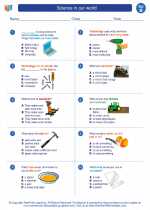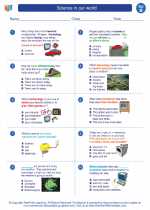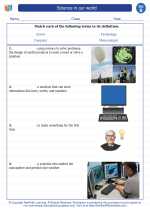Conservation
Conservation refers to the careful use and protection of natural resources, including plants, animals, and ecosystems, to ensure their continued availability for future generations. It involves understanding the impact of human activities on the environment and taking steps to minimize that impact.
Why is Conservation Important?
- Promotes Biodiversity: Conservation helps to protect the variety of living organisms and ecosystems, which is essential for the balance of nature.
- Preserves Resources: It ensures that natural resources such as water, air, soil, and forests are not overexploited and remain available for the future.
- Supports Sustainable Development: Conservation allows for the use of resources in a way that meets current needs without compromising the ability of future generations to meet their own needs.
- Protects Habitats: It safeguards the natural habitats of plants and animals, which in turn supports the overall health of the environment.
Ways to Conserve
There are several ways individuals can contribute to conservation efforts:
- Reducing, reusing, and recycling to minimize waste
- Conserving water by fixing leaks and using water-saving devices
- Using energy-efficient appliances and practices to reduce electricity consumption
- Supporting sustainable and ethical products
- Participating in community clean-up and restoration projects
Study Guide
To understand conservation better, consider studying the following topics:
- The importance of biodiversity and its role in conservation
- Human impact on the environment and ways to reduce it
- The concept of sustainable development and its principles
- The role of national parks and wildlife reserves in conservation
- Case studies of successful conservation efforts and their impact
By exploring these topics, you can gain a comprehensive understanding of conservation and the ways in which you can contribute to protecting our planet.
[Conservation] Related Worksheets and Study Guides:
.◂Science Worksheets and Study Guides Second Grade. Science in our world
Study Guide Science in our world
Science in our world  Worksheet/Answer key
Worksheet/Answer key Science in our world
Science in our world  Worksheet/Answer key
Worksheet/Answer key Science in our world
Science in our world  Worksheet/Answer key
Worksheet/Answer key Science in our world
Science in our world  Vocabulary/Answer key
Vocabulary/Answer key Science in our world
Science in our world 

 Worksheet/Answer key
Worksheet/Answer key
 Worksheet/Answer key
Worksheet/Answer key
 Worksheet/Answer key
Worksheet/Answer key
 Vocabulary/Answer key
Vocabulary/Answer key

The resources above cover the following skills:
LIFE SCIENCE (NGSS)
Biological Evolution: Unity and Diversity
Students who demonstrate understanding can:
Make observations of plants and animals to compare the diversity of life in different habitats[Clarification Statement: Emphasis is on the diversity of living things in each of a variety of different habitats.] [Assessment Boundary: Assessment does not include specific animal and plant names in specific habitats.]